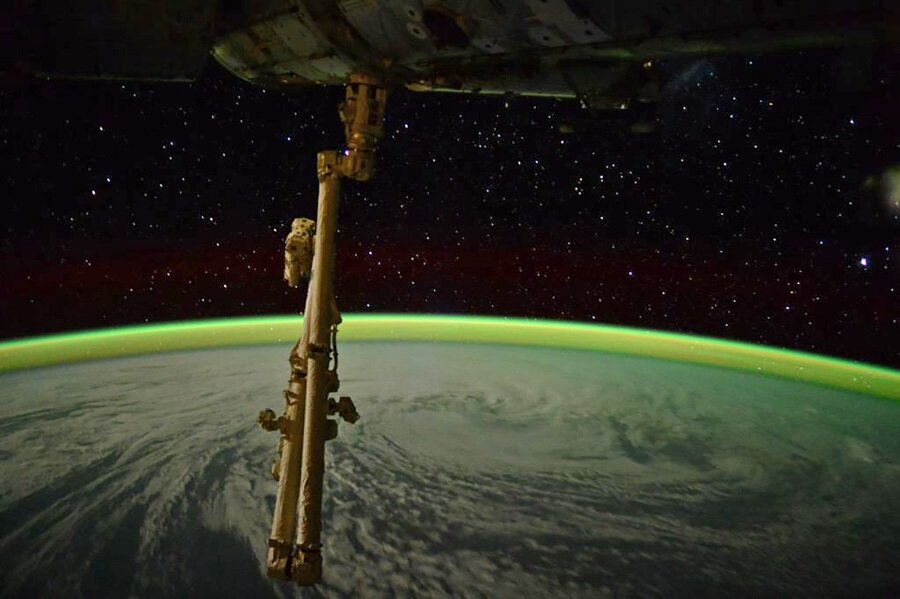Earth Day for space fans: What makes our planet unique?
Loading...
Last year, NASA celebrated Earth Day with a “Global Selfie” – a giant 3.2-gigapixel image of the Earth as it appeared from space that day, stitched together from more than 36,000 images taken by people around the world. This year, NASA is celebrating our home planet by asking people to share images and videos of their favorite spots on Earth, whether that’s the park down the street or the summit of Mount Everest.
NASA will be getting in on the sharing, too, by publishing images from its research aircraft; its scientists taking measurements of the planet’s oceans, forests, deserts, and glaciers; and its 20 Earth-orbiting satellites. The event is meant to celebrate the elements that make our planet habitable: its oceans, its generally temperate climate, and its atmosphere.
But what makes our home planet different from so many others? Earth is complex, NASA wrote in its announcement, “and it is this complexity that challenges Earth scientists as they seek to figure out how the whole planet works as a system.” So far, scientists have been able not only to get a better picture of our home planet’s workings, but also to identify more than 1,800 planets outside of our solar system. About two dozen of these planets are considered “Earth-like,” meaning they could have liquid water and atmospheres similar to Earth’s.
How do scientists identify Earth-like planets in faraway galaxies? It all starts with a shadow. The orbiting Kepler telescope can detect the shadow created when a distant planet passes in front of its star on its orbit. NASA then analyzes collected data to estimate how far away the planet is from the host star. A planet’s orbit is in the “habitable zone” or “Goldilocks zone” if it’s far enough away from the star that liquid water doesn’t immediately evaporate, but not so far that it all freezes into ice. Earth-like planets are also about the same size as our own, and with similar densities.
Most of the planets NASA has identified so far are hundreds of light-years away – simply too distant to be able to study in depth. But a few are close enough that scientists could collect data about their atmospheres and compositions. The Transiting Exoplanet Survey Satellite, scheduled to launch in 2017, will attempt to identify Earth-like planets close enough to us that we could study them in detail.
NASA’s Earth Day 2015 celebration is called “No Place Like Home,” and while the Earth is uniquely suited to supporting human life, there are almost certainly other planets similar to our own out there in the universe. And some of them might be right here in our own galactic neighborhood.








